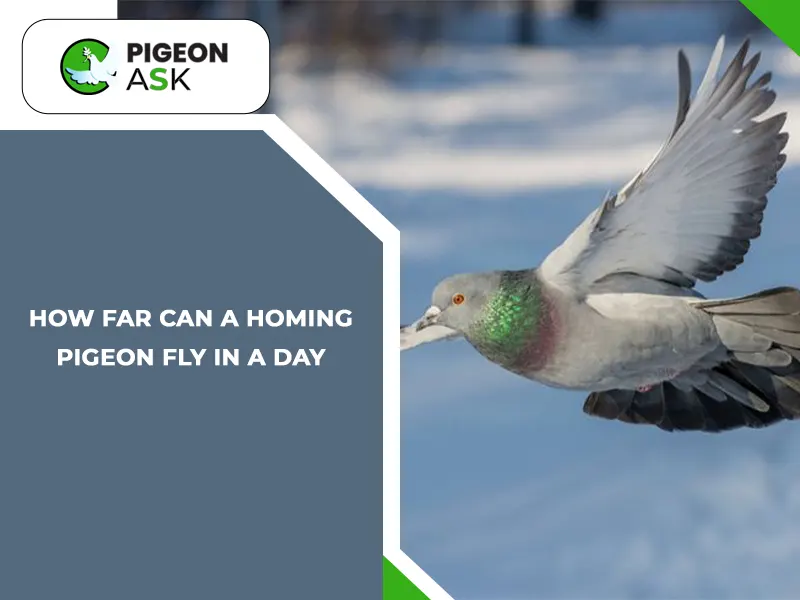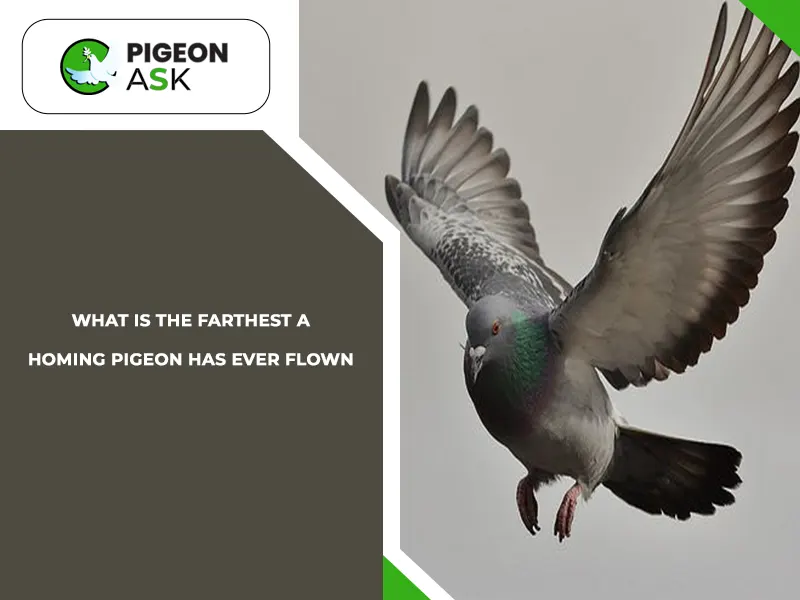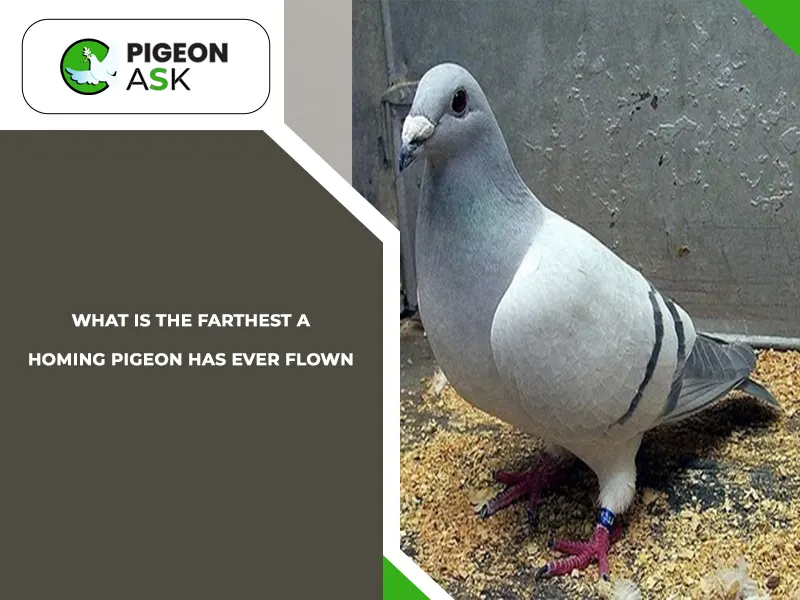How Far Can a Homing Pigeon Fly?
Homing pigeons are fascinating birds recognized for their ability to navigate large distances back home. However, each species has a limit to the greatest distance they can go and homing pigeons are no exception.
So, how far can a homing pigeon fly? On average, they can fly about 600 to 800 miles in a single day. However, some have even flown 1100 miles.
Similarly, the highest distance a pigeon has ever covered is 8078 miles in a single flying cycle. The distance varies vastly with age, training and genes.
In this article, we will cover everything there is about homing pigeons and how far they can fly. Let’s get started.
How Far Can a Homing Pigeon Fly at Once?
The primary factor that comes into play in how far these pigeons can fly at once is their age. Younger pigeons tend to have more energy and stamina, making them better suited for long-distance flights.
The recorded single flying of a homing pigeon is 1,800 kilometers (1,100 miles) in the United States. But another phenomenon occurred when a homing pigeon named Joe traveled 8078 miles (13,000 km).
This is a record-breaking flying distance of all time.
Looking for more articles about pigeon habit:
How Far Can a Homing Pigeon Fly in a Day?
Homing pigeons are the ones that are known for the distance they can cover in a day. However, the answer to this is quite versatile.
This is because the distance entirely depends on several factors, such as weather conditions, wind speed, terrain, training and individual bird capabilities.

In short, the less resistance there is from the environment, the more distance the pigeon will be able to cover.
And in a similar vein, how well-trained the homing pigeon is and how active the individual’s genes are answers how far they can travel.
As a result, the average distance covered by homing pigeons is 600 to 800 miles (965 km to 1287 km) a day without stopping. They generate an average of 60 miles per hour while flying.
What Is the Farthest a Homing Pigeon Has Ever Flown?
A homing pigeon named Joe has traveled 8078 miles (13,000 km), breaking the records of all time.
Joe started his journey from the USA and navigated various landscapes, including mountains, deserts and bodies of water, to reach Australia.

During its journey, the 13,000 km pigeon would have encountered numerous challenges and obstacles. Adverse weather conditions, predators and lack of food sources are just a few examples.
However, pigeons are resilient creatures with excellent survival instincts. In the end, he was able to make it.
Learn about pigeon lifestyle in “Pigeon Habits” . We cover their eating, nesting, and interactions with humans.
Can Homing Pigeons Fly Across the Ocean?
Homing pigeons are capable of flying across the ocean, but some factors come into play. This includes weather conditions, wind patterns and the specific route they take.
Weather conditions
Firstly, pigeons don’t like adverse weather conditions such as storms or strong headwinds. As a result, they would avoid these weather conditions at any cost, which also includes not flying across the oceans.
Route
The specific route taken by homing pigeons across the ocean can also influence their chances of success. Pigeons are known to follow coastlines or land masses whenever possible, as they provide visual references for navigation.
So, if there are visual references, homing pigeons can and will prefer flying across the ocean.
Nevertheless, it is worth mentioning that while homing pigeons have the potential to fly across the ocean, it is not a common occurrence.
Most instances of pigeon flights involving long distances are conducted over land or shorter stretches of water.
Factors that Influence the Distance Covered by Homing Pigeons
In this section, we will dig in depth into those factors so that you can understand how these affect the distance that the pigeon can cover.

Genetics
Genetic factors play a significant role in determining the flight range of homing pigeons. Traits such as orientation ability, stamina and navigational memory are dependent on genes.
As a result, with active genes, all of these features are enhanced, which enables the pigeons to cover more distance.
Training
Pigeons are gradually accustomed to longer flights by being released from increasing distances away from their home loft.
Regular training helps improve their navigational skills, endurance and familiarity with different environments, enabling them to cover greater distances.
Age
As already mentioned, younger pigeons tend to have more stamina and energy compared to older ones. So, without a doubt, they can travel faster and cover more distance.
Weather Conditions
Pigeons rely on various environmental cues such as sunlight, magnetic fields, landmarks and scents to navigate.
Adverse weather conditions like heavy rain, fog, strong winds, or storms can hinder their ability to orient themselves accurately and fly efficiently. Thus reducing the distances they can cover.
Release Point
Pigeons released from unfamiliar or distant locations may take longer to orient themselves and find their way back. As a result, they potentially cover shorter distances compared to pigeons released from familiar areas.
Physical Health
Factors such as overall health, fitness, wing strength and endurance play a role in determining their flight range.
Pigeons in good physical condition are more likely to cover longer distances compared to those with health issues or poor fitness levels.
Conclusion
We hope you get your answer to how far a homing pigeon can fly. These pigeons can cover 600 to 800 miles in a single day.
However, these are just average values and can be extended more with active genes, proper training, and an excellent environment.
And the pigeon’s highest recorded total distance traveled is 8078 miles.
Nevertheless, every homing pigeon might not be able to achieve it as it takes a lot to cover this big distance.
References:
- https://www.aljazeera.com/news/2021/1/14/australia-to-kill-pigeon-that-crossed-pacific-from-oregon
- https://openaccesspub.org/veterinary-healthcare/article/703
- https://theconversation.com/explainer-how-do-homing-pigeons-navigate-25633
- https://www.cbsnews.com/news/australia-to-kill-pigeon-that-crossed-pacific-from-us/
